The Multi-Sided Story of Palm Oil
In the United States, we have a knee-jerk negative reaction to palm oil because of its negative press. People in our culture have been trained to think that palm oil is bad for our bodies and the environment.
However, in many communities around the world, including Sierra Leone, palm oil production is a crucial source of income for small-scale producers. Many people, particularly women, operate small backyard businesses centered around palm oil production, which enables them to support their families and meet their basic needs.
Because of palm oil’s notorious reputation, when potential donors read about community members in Sierra Leone producing it as a backyard business, they may initially shy away from the idea. But there’s more to this situation than many people realize.
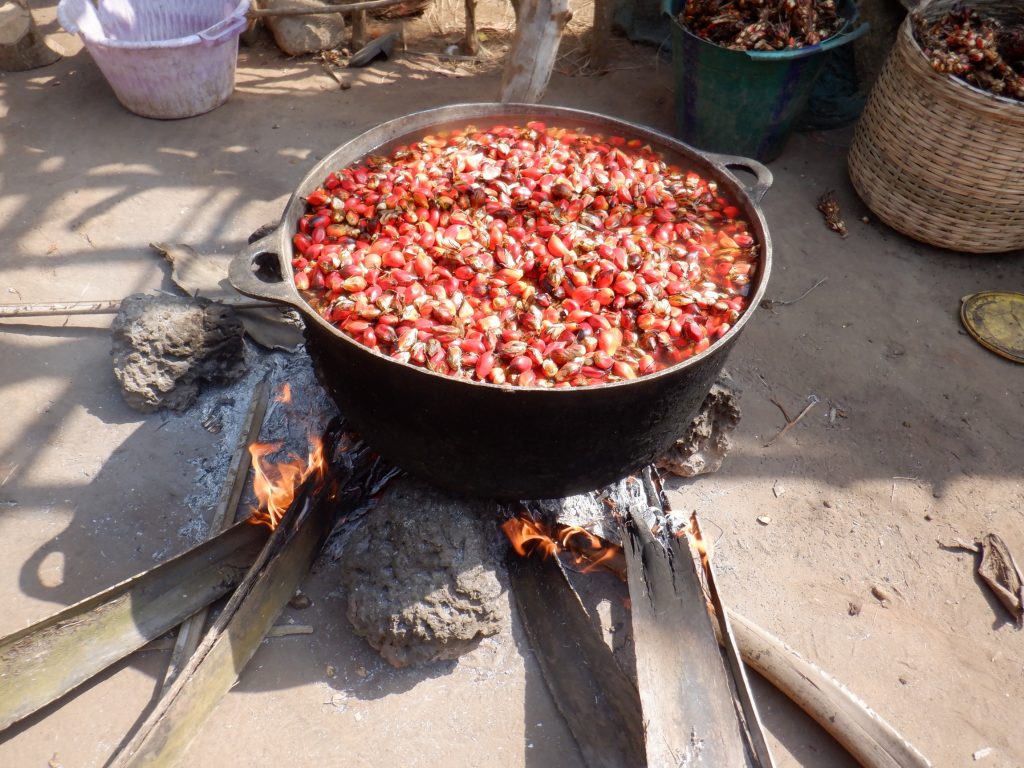
One of the main reasons for the popularity of palm oil is its versatility.
“Palm oil is in nearly everything – it’s in close to 50% of the packaged products we find in supermarkets, everything from pizza, doughnuts and chocolate, to deodorant, shampoo, toothpaste, and lipstick. It’s also used in animal feed and as a biofuel in many parts of the world.”
— World Wildlife Fund
Not only is palm oil multifunctional, but it also takes less land to produce large quantities. Oil palms require four to ten times less land to produce the same amount of oil as other common oil crops, which is part of why calls to boycott palm oil have fallen on deaf ears. So rather than eradicating it altogether, reforming its production methods is a much better option.
Is producing palm oil bad for the environment?
Historically, palm oil production has been incredibly harmful to the environment, with deforestation serving as the main complaint. Clearing large sections of forest for human use or development deprives local wildlife of their natural habitat and community members of vital resources. Even worse, deforestation actively contributes to climate change.
“A mature tree absorbs and stores carbon dioxide – the greenhouse gas we emit from burning fossil fuels, like coal, gas, and oil. These gases cause climate change and lead to a warming in the planet’s temperature. As more forests are destroyed, so too is our ability to trap these greenhouse gases and slow rising temperatures around the world which cause droughts, forest fires, and more frequent hurricanes and typhoons.”
— Coalition for Rainforest Nations
However, thanks in part to the bad press as well as the formation of groups like the Roundtable on Sustainable Palm Oil (RSPO), palm oil production is becoming less harmful. In fact, producing palm oil with sustainable practices in mind often curtails deforestation efforts.
Nowadays, savvy consumers can look up their favorite brands’ palm oil policies, or scan their products on the go to check for their palm oil sustainability rating.
And when we talk about the people we meet in Sierra Leone who create palm oil for sale, they are not operating on the same mammoth scale as the big players. Often, they are the sole proprietors of a grassroots business — not perpetrators of mass deforestation.
Where we work in Sierra Leone, making palm oil begins with harvesting ripe fruit bunches from oil palm trees. The harvested bunches are then transported to a processing site, where the individual fruits are separated from the bunch stalk.
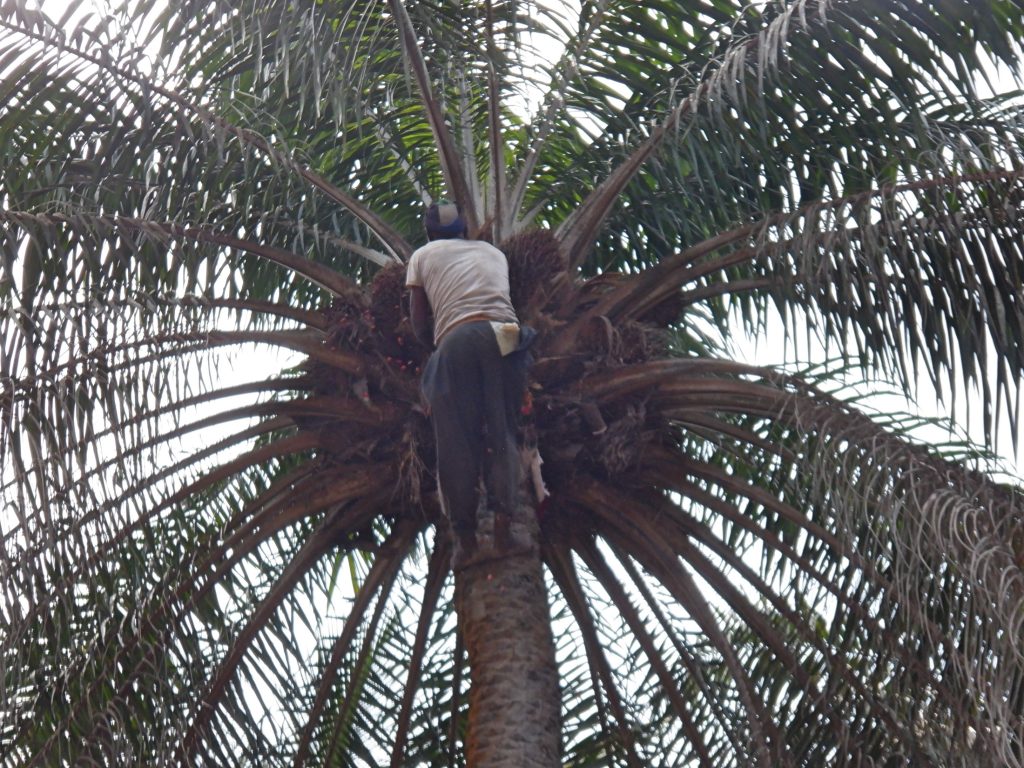
The separated fruits are sterilized, usually by boiling or steaming, to soften the fruit flesh and prevent enzyme activity that can spoil the oil. This step also helps loosen the fruit’s outer skin.
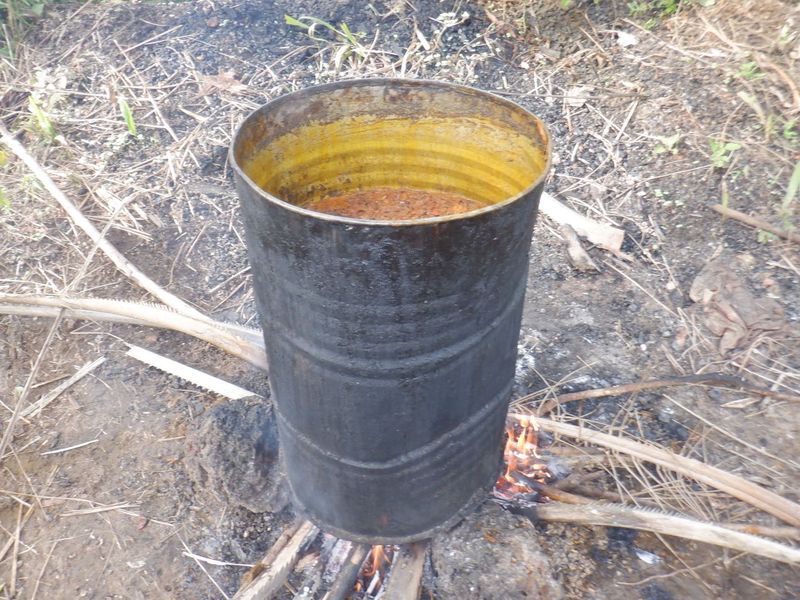
After sterilization, the fruits are mashed or pounded to break down the pulp and release the oil. This is often done using large mortar and pestle-like tools or mechanical digesters.
The mashed pulp is then pressed to extract the crude palm oil. In traditional methods, this is done manually by squeezing the pulp, while more mechanized systems may use hydraulic presses or screw presses.
The extracted oil contains water, fibers, and other impurities. It is left to settle in a container, allowing the oil to rise to the top while the water and impurities settle at the bottom. The oil is then skimmed off the top.
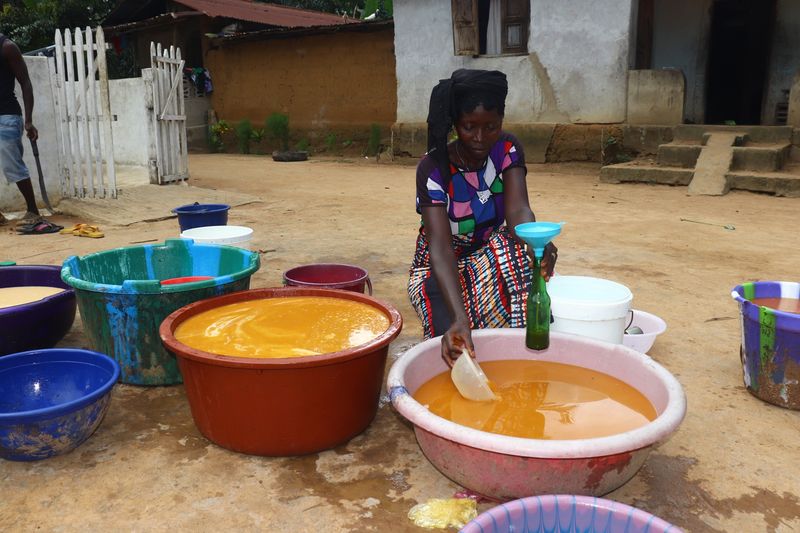
For many families in rural areas, palm oil production is a critical source of income. In Sierra Leone, small-scale producers like Adamsay rely on palm oil as one of the few ways to generate income and support their families. Without this business, many would struggle to meet basic needs.
“Well, I’ve been able to produce more palm oil because of the water. It has helped me to process a large amount of palm oil that has generated income for me and my family,” said 39-year-old trader Adamsay from Lokoya Community in Sierra Leone.
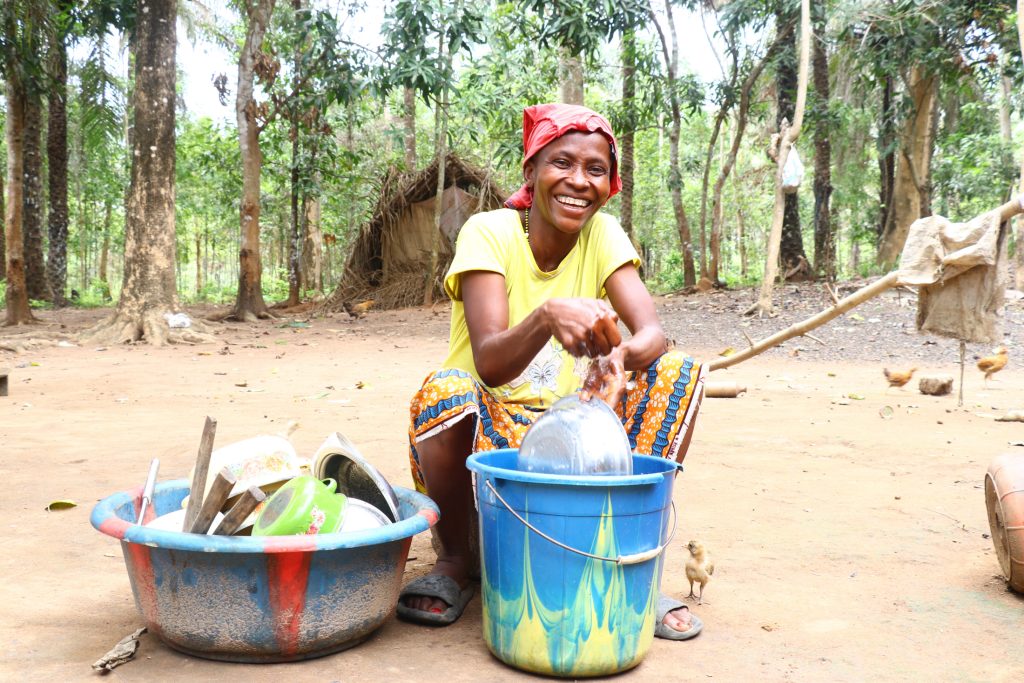
Is eating palm oil bad for your health?
Palm oil is a commonly used vegetable oil in many processed foods, but its health effects depend on how much and what type you consume.
Palm oil contains both saturated and unsaturated fats. It’s about 50% saturated fat, which can raise LDL (bad) cholesterol levels when consumed in excess, potentially increasing the risk of heart disease.
Refined palm oil, often used in processed foods, loses some nutrients during processing and may be less healthy than unrefined or red palm oil. Red palm oil, which is less processed, contains more antioxidants like vitamin E and beta-carotene, which can be beneficial — however, red palm oil is rare in Western cultures.
Like other fats, consuming palm oil in moderation as part of a balanced diet is generally fine. The health risks increase with overconsumption, especially in the form of processed foods high in saturated fats.
According to Harvard nutrition experts, palm oil is clearly better than high–trans fat shortenings and probably a better choice than butter. But vegetable oils that are naturally liquid at room temperature, such as olive oil and canola oil, should still be your first choice.
— Harvard Health
Conclusion: A Balanced Perspective
As consumers, we can make choices that support sustainable palm oil production. By choosing products made with certified sustainable palm oil and supporting small producers who use environmentally responsible methods, we can contribute to a more equitable and sustainable future.
The next time you hear about palm oil production in communities like those in Sierra Leone, remember that it’s not a simple story of environmental harm. For many people, it’s a vital source of livelihood, and sustainable production is key to balancing the needs of both people and the planet.
Home More Like ThisTweet